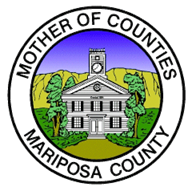Wildfire Preparedness
Preparing for wildfire is an ongoing task. By starting with your home and working out, you can reduce the risk of structure loss during wildfires. Though it can be overwhelming to figure out where to begin, there are simple, cost-effective actions you can take to significantly reduce fire risk for your home and community.
To find out more information about wildfire preparedness, please review the resources below and visit https://ucanr.edu/sites/fire/Prepare/
Harden your home
Home hardening involves addressing potential vulnerabilities to wildfires in order to make your house more fire resistant. Due to differences in type, construction date, and location, it is difficult to generalize higher risks to residential buildings. It is therefore crucial to identify the vulnerabilities of each building component so you can prioritize what needs to be done for your home. The diagram below illustrates which building components are most likely to ignite during a wildfire.

Create Defensible Space
Defensible space is a term used to describe the careful selection, location, and maintenance of vegetation and other combustible material on your property. The purpose of defensible space is to:
- Minimize the pathways of wildfire to burn directly to the home
- Reduce radiant heat exposures to the home and structures
- Reduce the potential for embers to ignite vegetation adjacent to the home
- Provide a safe place for fire personnel to defend the home and allow for safe routes for evacuation.

Reduce Forest Fuels
Reduce forest fuels around your home and property to reduce the risk of ignition and create safer conditions for emergency responders during wildfires.
UC ANR has several resources available on their Forest Stewardship website to assist landowners with forestland management, including videos and publications about multiple topics, including fuels management.
Work with your local Fire Safe Council or Resource Conservation District to see if you qualify for help managing your forest fuels.
Mariposa Resource Conservation District (RCD)
Yosemite Sequoia Resource Conservation & Development Council
The Natural Resources Conservation Service’s Environmental Quality Incentives Program (EQIP) provides technical and financial assistance to agricultural producers and forest landowners to address natural resources concerns, including for fuels mitigation.
CAL FIRE has a state forestry assistance program that can help landowners with technical, financial, and educational assistance through the California Forest Improvement Program (CFIP), a cost share program to help landowners with forest management planning, reforestation, site preparation, thinning, and wildlife habitat improvement projects. The Vegetation Management Program (VMP) is also available to help landowners manage fuels and improve rangelands through a variety of treatment approaches.
Join or Start a Firewise Community
FireWise Communities work together to plan and take steps to protect their neighborhood from wildfire by hardening their homes and reducing vegetation on their properties.
To learn more about joining or starting a Firewise Community in Mariposa County, contact John Patton, Wildfire Mitigation Coordinator for Mariposa County, by email at jpatton@mariposacounty.org or by phone at (209)-742-1303
Be Prepared to Evacuate
Know what to do during an evacuation
Resources are also available from the Central California Animal Disaster Team to help you be prepared to care for your animals during a disaster or emergency:
Disaster Preparedness for Companion Pets
Disaster Preparedness for Livestock
Disaster Preparedness for Equine
Know what to do if you have to shelter-in-place
Sign up for alerts in Mariposa County through text, call, or email when your home is within an evacuation zone during an emergency.
Get alerts when a wildfire is near you
Download the WatchDuty App
See what wildfires are currently near you by visiting the Active wildfires map
Be Smoke Ready
Smoke exposure from wildfires is an increasingly common public health hazard to communities throughout California. Knowing where to find accurate information and being prepared to act when smoke is in the air can help you protect yourself and your family.
Visit the UC ANR Fire Network's Air Quality and Smoke Readiness Webpage for information on the health impacts of smoke and an introduction to preparing yourself during smoke events.
Download the California Smoke Spotter App to receive the latest information on prescribed fire, projected smoke impacts, current air quality, and educational material on smoke readiness. https://ww2.arb.ca.gov/news/california-air-resources-board-launches-california-smoke-spotter-app
Visit the California Air Resources Board Smoke Ready California page to learn more about smoke and public health, the air quality index, what particulate matter is, how to wear a respirator mask correctly, how to protect yourself from smoke, and evacuation smoke safety.
Visit the The California Clean Air Centers Map to find information about permanent and temporary clean air shelters, including their address, operating hours, and contact information.
Fire resilient plants
All plants will burn under the right conditions, regardless of how they are classified (“fire resistant”, “fire safe”, “firewise”, etc). Growing conditions and maintenance can have a greater impact on the flammability of plants than the species itself. You can create a fire-resilient landscape by following these three simple concepts:
- Right Plant, Right Place
- Spacing
- Maintenance
Learn more at the UC ANR Fire Network Webpage




